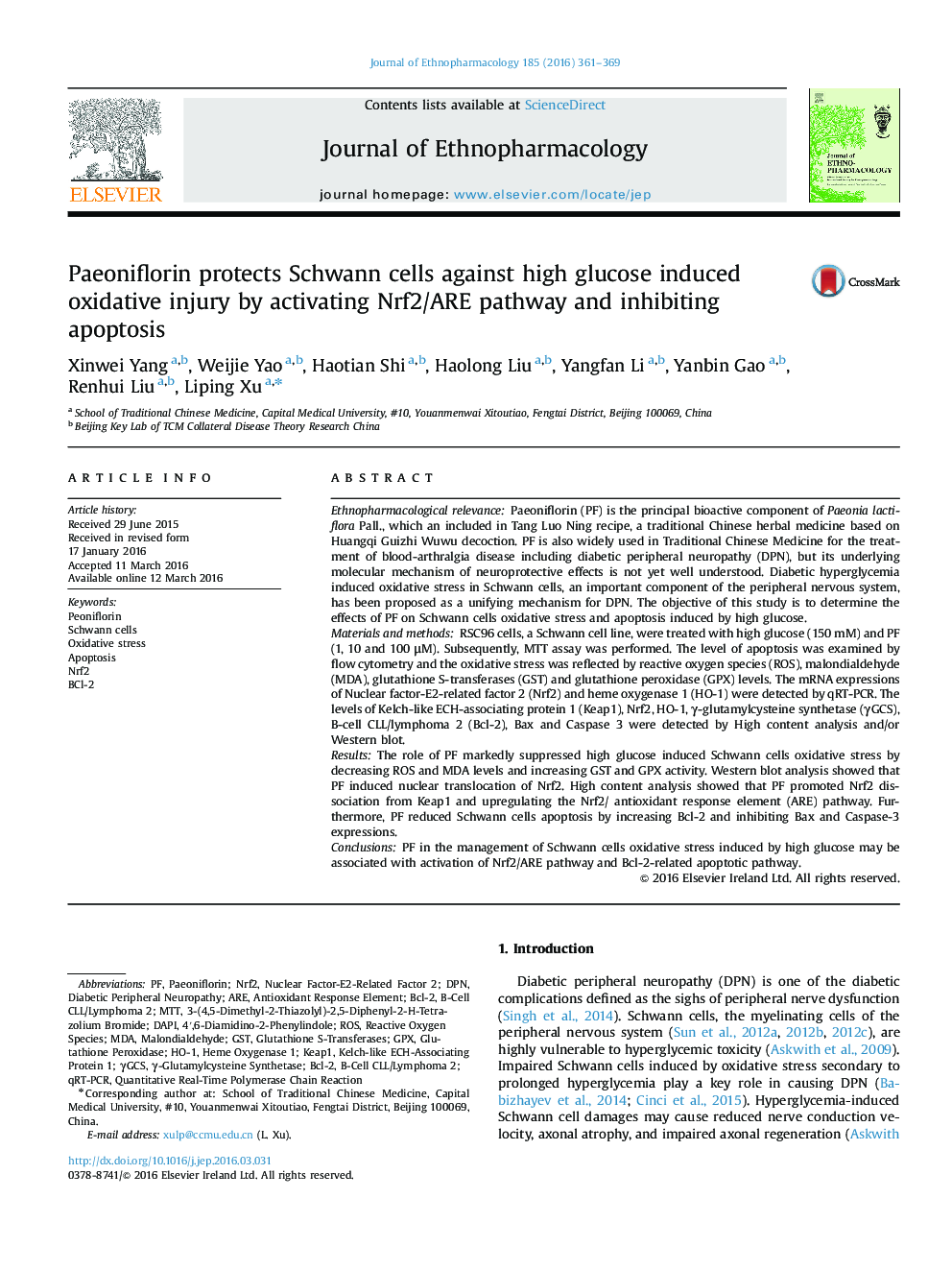| کد مقاله | کد نشریه | سال انتشار | مقاله انگلیسی | نسخه تمام متن |
|---|---|---|---|---|
| 2544852 | 1560377 | 2016 | 9 صفحه PDF | دانلود رایگان |

Ethnopharmacological relevancePaeoniflorin (PF) is the principal bioactive component of Paeonia lactiflora Pall., which an included in Tang Luo Ning recipe, a traditional Chinese herbal medicine based on Huangqi Guizhi Wuwu decoction. PF is also widely used in Traditional Chinese Medicine for the treatment of blood-arthralgia disease including diabetic peripheral neuropathy (DPN), but its underlying molecular mechanism of neuroprotective effects is not yet well understood. Diabetic hyperglycemia induced oxidative stress in Schwann cells, an important component of the peripheral nervous system, has been proposed as a unifying mechanism for DPN. The objective of this study is to determine the effects of PF on Schwann cells oxidative stress and apoptosis induced by high glucose.Materials and methodsRSC96 cells, a Schwann cell line, were treated with high glucose (150 mM) and PF (1, 10 and 100 μM). Subsequently, MTT assay was performed. The level of apoptosis was examined by flow cytometry and the oxidative stress was reflected by reactive oxygen species (ROS), malondialdehyde (MDA), glutathione S-transferases (GST) and glutathione peroxidase (GPX) levels. The mRNA expressions of Nuclear factor-E2-related factor 2 (Nrf2) and heme oxygenase 1 (HO-1) were detected by qRT-PCR. The levels of Kelch-like ECH-associating protein 1 (Keap1), Nrf2, HO-1, γ-glutamylcysteine synthetase (γGCS), B-cell CLL/lymphoma 2 (Bcl-2), Bax and Caspase 3 were detected by High content analysis and/or Western blot.ResultsThe role of PF markedly suppressed high glucose induced Schwann cells oxidative stress by decreasing ROS and MDA levels and increasing GST and GPX activity. Western blot analysis showed that PF induced nuclear translocation of Nrf2. High content analysis showed that PF promoted Nrf2 dissociation from Keap1 and upregulating the Nrf2/ antioxidant response element (ARE) pathway. Furthermore, PF reduced Schwann cells apoptosis by increasing Bcl-2 and inhibiting Bax and Caspase-3 expressions.ConclusionsPF in the management of Schwann cells oxidative stress induced by high glucose may be associated with activation of Nrf2/ARE pathway and Bcl-2-related apoptotic pathway.
Figure optionsDownload high-quality image (113 K)Download as PowerPoint slide
Journal: Journal of Ethnopharmacology - Volume 185, 5 June 2016, Pages 361–369